Indian hairstyles: history, description, tips. Indian beauty secrets are the most interesting things on blogs.
Chapter six. Indian Hairstyles
general characteristics
Ancient India occupied a vast territory on the Hindustan Peninsula. It was separated from other states by the high ridges of the Himalayan mountains. tropical nature, bright colors vegetation, the richest fauna turned Ancient India, according to travelers, into a land of wonders.
Thanks to archaeological excavations It is known that already in the second millennium BC, in the fertile valleys of the high-water rivers Ganges and Indus, there were cities and villages that quickly fell under the blows of unexpectedly appeared conquerors. Nomadic pastoralists who came from the north of the mainland and stood at a lower level of development than indigenous people India, mixed with it and settled throughout the peninsula. Social order ancient India since ancient times - community. The communities were headed by rajas - elected leaders. They gathered squads of warriors who went on campaigns and collected tribute. Rajas gradually turned into hereditary successors to power, and tax collectors into officials. In this way a class state was created.
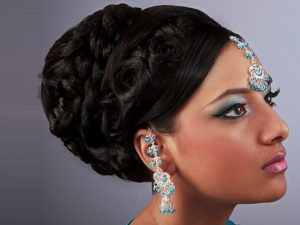
In the first millennium BC, larger slave states began to form. The slave state of Magadha stood out especially, seizing vast lands in the Ganges Valley. India is characterized by a caste structure of society. The population was divided into four castes. The first was made up of brahmanas (priests), the second - kshatriyas (warriors), the third - peasants and traders, the fourth - shudras (servants). There were also people deprived of all rights, who were not part of any caste - untouchables. Despite casteism, the peoples of India created high culture. They were the ones who learned to grow sugar cane and cotton. India is considered the birthplace of the numerals we know as Arabic; was high musical culture; epic works"Mahabharata" and "Ramayana" still amaze with their high artistic merit. The people of India have created beautiful and unique examples of architecture, applied arts, jewelry, weaving, which was especially revered. Master weavers passed on their specialty from generation to generation, from generation to generation. In India, amazing fabrics were created from cotton, which quickly spread throughout the world* and became the most popular and expensive. Methods of processing and dyeing fabrics were carefully hidden.
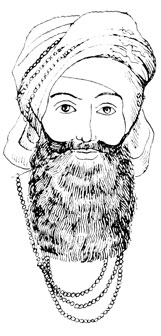
Sculptures and paintings have preserved the ideas of the peoples of India about ideal beauty: men - slim, with thin waists, women are also slender, but wide-hipped, with developed curves. The faces of both are elongated, with regular features, almond-shaped eyes, arched eyebrows. Men were portrayed as warlike, and women as gentle and beautiful.
Basic types and forms of hairstyles
The hairstyle of the ancient Indian population was influenced by various factors: climatic conditions and caste. Men's hairstyles did not differ in variety and complexity of shapes. It was combed back hair, curled in waves, with curls at the ends. Kshatriya warriors shaved their heads, leaving a small tuft of hair in the center of the head. Perhaps that is why they were called shikhandi-forelocks (from the word “shikhanda” - forelock).
Sikhs wore long hair, arranged in oblong bundles, secured above the forehead. The buns were made from a braid or a plait. Warriors also wore long strand hair curled into a curl and hanging down on the right side. Dervishes did not cut their hair - they wore it loose to their shoulders. Among the Brahmins, shaving the hair on the head was considered a great shame. This ritual could replace death penalty. Prisoners' hair was shaved off as a sign of shame, leaving five tufts sticking out in different directions.
Men, having entered the period of maturity, grew mustaches and beards. Beards were dyed with vegetable dyes and smeared with aromatic potions and oils. Beards and mustaches were curled (Fig. 27 and 28). Rich nobles, in order not to spoil the curls on their mustaches or beards, wore special headbands at night - beard guards. Children and young men did not cut their hair - they wore it loose over their shoulders.
Women's hairstyles, like men's, were very simple, regardless of class. Women combed their hair smoothly back from the forehead and placed it at the back of the head or low on the neck in a bun such as a snail or a voluminous hemisphere. A pad or animal fur was placed inside the bundle - this gave the bundle stability. Hairstyles made from curled hair were done only by temple dancers - bayaderes. Spiral, tightly curled curls were located in a thick mass on the back. The hairstyles were complemented by curls on the cheeks. Girls wore side braids, sometimes combing their hair to one side, passing it through a small tube, and braiding it with a plait. bangs and short haircuts weren't worn.
The hairstyle was thickly saturated with oils, which not only gave the hair shine, but also protected the scalp from sun rays. Sometimes the hair was tinted with vegetable dyes, giving it a copper tint. The dyes had medicinal properties, promoted hair growth.
Hats, jewelry, cosmetics
Indian clothes were distinguished by grace and simplicity. The simplest of them were a piece of cloth that was wrapped around the entire body. Clothes were worn draped in loose folds. The colors of the clothes were different, but prevailed bright hues. Clothes were made from cotton, the homeland of which India has been considered since ancient times. The names of the fabrics were very diverse - most of them were named after the regions, cities, and villages in which they were made. This is how the names calico, madapolam, and madras spread. In the mid-8th century, the finest fabrics from the fluff of Tibetan goats appeared - the world famous Kashmir shawls with a unique pattern and ornament were made from this material. The colorful border depicting birds, flowers and leaves was woven so skillfully that the design seemed to come to life. The influence of the Arabs was reflected in the spread of silk, taffeta, and muslin. Judging by numerous temple images, men wore dhoti - a cloth fastened to the hips; top part the body remained naked. Sometimes they wore a rupan cloak. Under the influence of foreigners, they began to wear long, tight trousers and close-fitting caftans. IN men's clothing white and black tones predominated, without patterns.
In ancient times, women wore only a loincloth; later, a sari appeared - a piece of cloth with which they wrapped their body. Special laws for its drapery appeared. The sari required about 6-8 meters of material, and it was necessary to wrap the body from top to bottom.
The colors of saris, and these clothes are still worn today, were mostly bright: scarlet, green, yellow, blue. An addition to the saris were small blouses - holi, they resembled a closed bodice and were made from rich fabrics, bright colors, which emphasized the color scheme of the sari. Each region of India made its own additions to the costume. So, in Kashmir and Bengal they wore long shirts and trousers, in the western regions of India they wore wide skirts and large colorful bedspreads.
The headdresses of the privileged castes, Brahmins and warriors, and the common population were of the same type. The difference was in the quality of the material. The main headdresses of men were a turban and a turban, which rose majestically above the forehead, while the ends of the hair remained open.
Rich people wore headdresses made of thin colored silks, gold and silver brocade, linen fabric - mostly monochromatic. White, crimson and red colors predominated different shades. Mohammedan Indians could also wear turbans of blue or yellow color, but from paper material, since wearing pure silk was forbidden to them by religion. Those who visited had the right to wear green turbans. holy city Mecca. The turban was rolled up from a long piece of fabric (6-7 meters), draped with folds in the shape of a high cone or a wide pipe. Often, to maintain its shape, a thin layer was placed under the material.
cardboard. The turban was a piece of fabric, but this fabric, unlike the turban, was laid in flat strands. The turban and turban of rich dignitaries were decorated with precious stones, most often carnelian, amethyst, and sapphire. A brooch was often pinned in front of the forehead, which held a bunch of feathers of a bird of paradise. Hats common people were more modest, from lower grades of fabric. In addition to these headdresses, men wore small velvet caps that resembled skullcaps, headbands, caps made of linen and felt, and caps similar to modern caps.
For women, the sari was not only part of the costume, but also served as a headdress. The end of the sari was thrown over the head, hiding the hair. Women of all classes also wore transparent veils, airy veils, which were attached to the head with a hoop. They wore headbands gracefully woven from threads, small caps embroidered with beads, sequins, glass beads, and scarves made of all kinds of fabrics. All the hats were distinguished by their grace, high taste and subtlety of execution. But brides' dresses were especially skillfully made. They showed the boundless imagination of the masters. As a rule, they were made of expensive brocade, embroidered with laces, metal plaques, and small and large gold flies. The addition included temple pendants made of pearl or coral threads, openwork scarves, and tassels.
IN Everyday life wore cloth bandages. Bayaderes, dancers, and musicians wore elegant tiaras and wreaths of fresh flowers, leaves, and hummingbird feathers (Fig. 29). They tied purple and shiny ribbons decorated with bells.
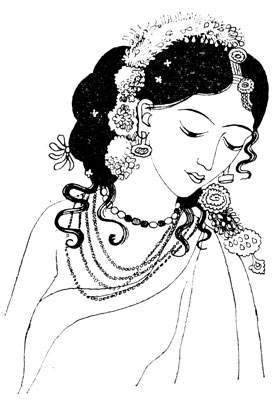
Decorations. IN Ancient India Everyone wore jewelry - children, teenagers, women and men. The rich decorated their hats with jewelry. Fine brooches, hammered clasps, pendants made of beads, pearls, precious and semi gems framed in gold or silver complemented the suit. They wore beads, chokers, necklaces, medallions, and chains. Rings and earrings were worn by men of all castes. The distinctive sign of the Brahmins were gold earrings. By law, pariahs could only have jewelry made of iron. Women wore a lot of jewelry, especially on holidays. The partings of the hairstyles were covered with longitudinal threads of beads, which ended on the forehead with a round plaque or decoration in the form of a flower or moon. Young women wore jewelry in the form of a single stone or ring in their left nostril. But widows could not wear this decoration. IN special occasions people decorated themselves with garlands of fresh flowers, bird feathers, plant leaves, roots, and fruits.
Cosmetics. All segments of the Indian population inked their eyebrows and eyelids with charcoal, and lined them with antimony and basma. The face and neck were covered with whitewash and the cheeks were reddened. They gilded their lips and covered them brown paint teeth. Women painted a small spot in the center of their forehead - it was called tilaka, or tilak. In ancient times it denoted a sign of caste or sect. It was applied with sandalwood, cinnabar, and saffron powder using a brush. Different castes had their own signs, special shapes and colors. This sign has always distinguished married women. Among the population, it was customary to paint the ends of the fingers and toes Orange color. Hair partings were also colored orange or red.
Indian hairstyles attract girls with their exquisite beauty. National tradition demands from the women of this country special attention to your hair: careful care, fumigation with incense, decoration with flowers and decor. This hairstyle is no more difficult to do than any other. But you need to know those features that immediately make it clear that this hairstyle is Indian.
Accessories for Indian hairstyles
In India, hair is considered as important a part of the body as any other. From childhood, girls are taught to pay attention to the beauty of their hair and choose the appropriate decor for a specific outfit or event. Jewelry in a woman's hair indicates her belonging to a particular caste.
Those who are part of the circle of rich people use it to decorate their hairstyles. jewelry with precious stones. Often these accessories are part of a set: earrings, rings, bracelets. Therefore, all jewelry for a specific outfit has a common style and design.
Most of the girls in this country belong to the middle and low income strata. Jewelry for hair they are used much less often here. Accessories more common to these castes are jewelry, ribbons, flowers, hairpins, and strings of beads.
When choosing decor for an Indian hairstyle, you need to understand that the brightness of the outfits of women in this country is Slavic countries may be inappropriate. Hair decoration should be in harmony with the general appearance of a woman, emphasizing the features of her appearance and outfit.
If the decorative element in the chosen Indian hairstyle is fresh flowers, this does not mean that you need to exactly repeat the choice of women from India. It is reasonable to replace fresh flowers with plastic or fabric analogues. Bright colors It is better to choose for any events: holidays, celebrations, parties. For everyday use optimal choice- discreet and stylish decor in pastel shades.
How to do Indian hairstyle for long hair
 When starting to create a hairstyle, you need to understand one feature: Indian women naturally have Thick hair, allowing you to create real masterpieces from them. For Slavic girls, such a result may not be available.
When starting to create a hairstyle, you need to understand one feature: Indian women naturally have Thick hair, allowing you to create real masterpieces from them. For Slavic girls, such a result may not be available.
Indian women have thicker and coarser hair that can for a long time hold your hairstyle without using additional fixation products: sprays and gels. Most Slavic women have softer and thin hair. Therefore, achieving the desired hair volume will not be easy. All this must be taken into account in order not to be disappointed when you see the result of your labors.
There are a lot of Indian style hairstyles for medium and long hair that will suit absolutely all girls. As decoration you can choose beautiful jewelry, ribbons, bows, combs, hairpins. In addition, to add volume you will need a special foam insert, which can be purchased at a hairdressing supply store.
The procedure is as follows:
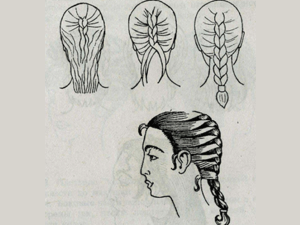
- the hair is carefully combed and parted down the middle;
- separate 2 suprafrontal and 2 supratemporal strands (one strand of each type on the left and right sides);
- all other hair is collected in a ponytail, the fixation point of which will be at the back of the head;
- secure the tail and put a foam sponge on it;
- divide the total volume of the tail into three parts (the side ones should be slightly thinner than the middle one);
- the side strands of the tail wrap around foam sponge so that you get a lush, beautiful ring of hair hiding the foam sponge;
- Braids are woven from supratemporal and supra-frontal strands;
- if you want to make your hair more elegant, ribbons or braid are woven into the braids;
- the braids are laid towards the tail and their ends are hidden under the bun, using hairpin fixation;
- the thickest strand remaining from the tail is divided into two parts;
- a braid is woven from one part and wrapped around the bun;
- from the second part, the strands form beautiful curls and decorate the bun with them.
The hairstyle itself is a spectacular decoration of the head, so a minimum of decor is preferable.
If ribbons were used during the braiding process, this can be limited. If the braids are without ribbons, the hair is decorated with hairpins, bows, and jewelry.
For everyday hair styling, Indian women most often comb it back smoothly and place it either at the back of the head or directly above the neck. Traditionally, two types of beam are used: in the form of a snail or a hemisphere. In order to learn how to do Indian hairstyles, you need to understand their peculiarity: they are simple and luxurious at the same time.
Mysterious India smells of spices, sounds like movie music and is replete with bright, elegant saris. Eastern women, local residents of a distant country are attractive with that exotic beauty that involuntarily awes northern women.
And so bright, like flowers, they were nevertheless able to express their “I” with the help of rather modest women’s hairstyles.
Features of exotic hairstyles in Indian style
Indian women love beautiful things, so for them hair is not so much a subject of experimentation, but rather a part of the body that needs to be carefully looked after. Fumigating your hair with aromatic smoke is proof of this.
In a word, the beauty of curls for them lies primarily in the health of the hair, while Indian hairstyles themselves are quite simple, but at the same time incredibly feminine.
The only thing worth noting is the decorations. Gold, silver, and precious stones are used by noble and rich ladies. Jewelry, ribbons, hoops and flowers are easier for women.
Also, an important role is played by belonging to a caste, the division of people by social and professional status. By the way the hair is styled and decorated, one can easily determine which caste its owner belongs to.
How to do Indian hairstyle correctly?
An Indian style hairstyle ennobles any girl; it will make her seem more gentle and charming.
It’s very simple to make, no more difficult than any other. Unfortunately, girls who have short hair, you won’t be able to create such an image, since Indian hairstyles are done only for long or medium hair. The same applies to women with short bangs.
Indian hairstyle for long hair
To create it you will need the following things:
- comb;
- foam or mousse for styling;
- regular invisible rubber band;
- hairpins;
- decorations to choose from.
Comb your strands and make a straight parting in the middle of your head. If the curls “do not obey” or are frizzy, then it is better to use hair mousse. Gather the strands into a ponytail at the back of your head using an elastic band.
Divide the resulting tail into three parts. Make a bun out of two parts by twisting the hair into bundles and securing them with hairpins. Weave a braid from the remaining strands and wrap it around the bun. Its end should be secured under the bun, secured with hairpins.
Now it's time for the decorations. Indian women are very fond of all kinds of hairpins, earrings, and chains. Therefore, the more, the better. Traditional chains on the forehead and along the parting will perfectly complement earrings in similar style. For an everyday option, artificial flowers and hairpins decorated with pearls and stones are suitable.
Indian style hairstyle for medium hair
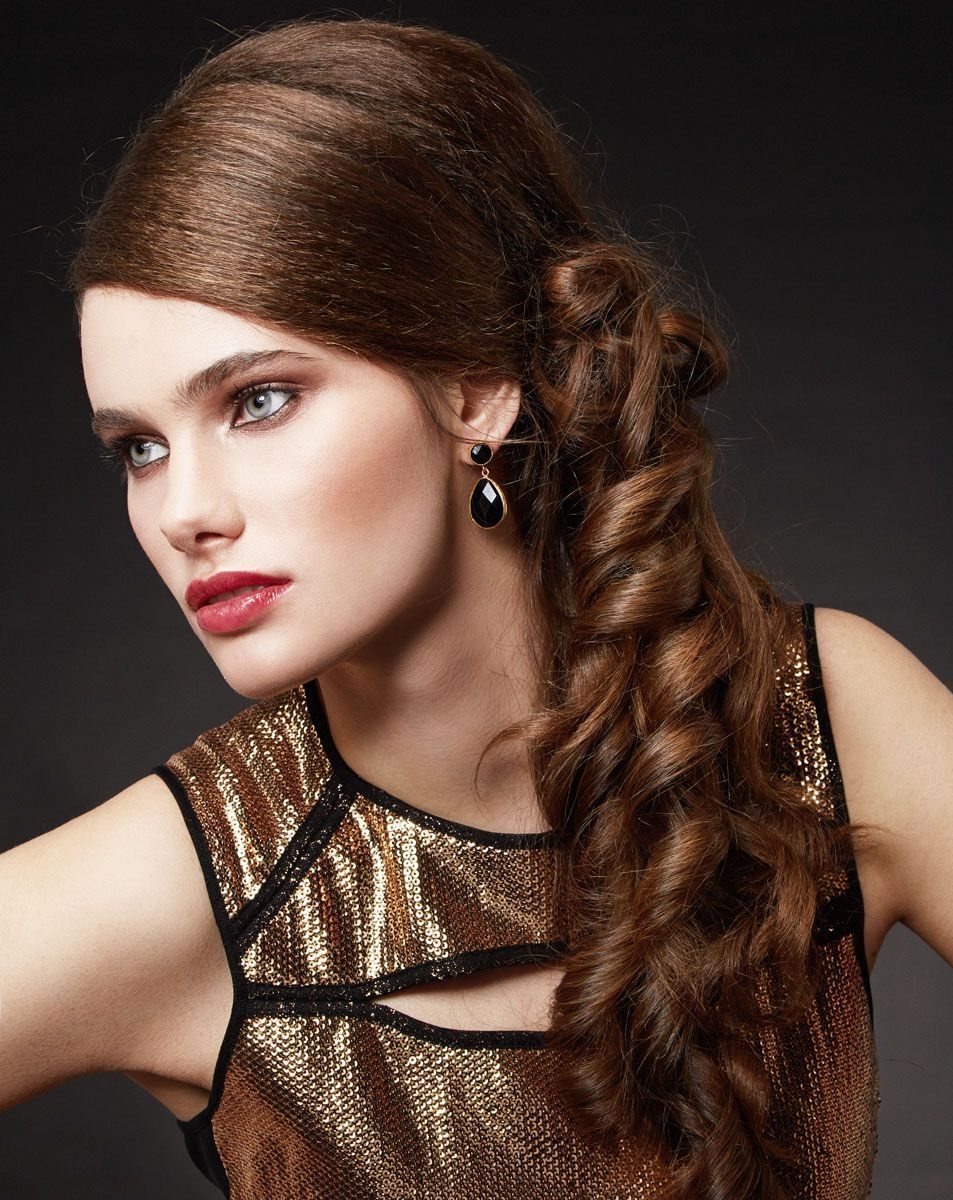
Nature has endowed Indian women with thick black locks. If you are the owner of just such hair, then you can safely try this style on yourself.
For medium strands, we will look at a more festive version of the Indian hairstyle. In addition to the accessories listed above, you must add a special foam sponge for more volume. You can buy it at any store that sells hairpins.
Comb your hair, separate the supra-frontal and supratemporal strands, divide them into two buns along a straight parting in the center. Gather the rest of your hair into a ponytail at the back of your head and place a sponge on top. Divide the tail into three parts. Wrap two thirds around the sponge on all sides, tuck the ends under it.
This must be done so that the sponge is not visible from under the hair; the result should be a neat, lush bun.
Turn the strands from the temples and forehead into pigtails directed towards the back of the head. You can immediately weave ribbons into these braids. If you know how to weave a “spikelet”, then you can make one. Hide the ends of the resulting braids under the bun, securing them with hairpins.
Divide the remaining hair from the ponytail into two parts. Turn one part into several small curls, which should be placed on top of the bun. Braid the last strand into a loose braid and wrap it around the bun. Decorate your hair with beads, flowers or decorative pins. The result will be a festive version of Indian hairstyle for medium hair, which can be done for an evening or a holiday.
It is worth noting that the majority of Indian women prefer to wear their hair in a regular braid at the back of the head, which is familiar to us since childhood. Combined with beautiful jewelry and outfits, this indian hairstyle It will look exotic and very feminine.
There are many peoples living on our land, and the relationships between them are different. But any relationship and contact is instantly reflected in... hairstyles.
While men are sorting things out, women are adopting each other’s hairstyles, trying to imitate and copy. Women in all countries try to be beautiful, but ideas about beauty around the world are quite different.
Modern Indian women change their hairstyles several times a year, while remaining true to tradition and following capricious fashion. They know how! Actually, since ancient times, Indian style hairstyles have been uncomplicated and simple. Women combed their hair smoothly back from the forehead, and then put it at the back of the head or even lower, on the neck, in a bun like a voluminous hemisphere or snail.
- Indian style hairstyles - variety
And yet, hairstyles in the Indian style were and remain quite diverse: plaits, braids of the most different types, in the form of pyramids, decorated with pearls and flowers, with threads, combs, hairpins, rings, hoops, ribbons, and beads. Whatever the hairstyles in Indian style, Indian women pay great attention to the beauty of their hair. Black thick braids are the pride of Indian women, just like blond curls for European women.
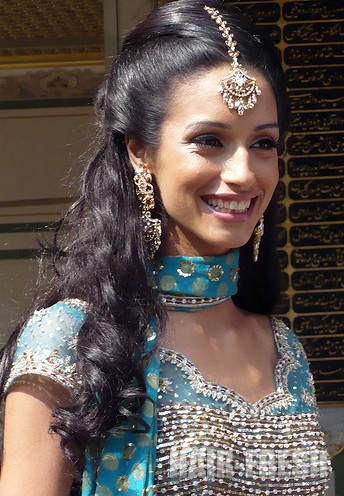
- Indian style hairstyles - how to do it
You can experiment with chignons and hair extensions, with henna and jewelry. The best option may be long braid, bright parting and lots of jewelry or artificial flowers. Luxury and simplicity at the same time are the basis of Indian-style hairstyles.
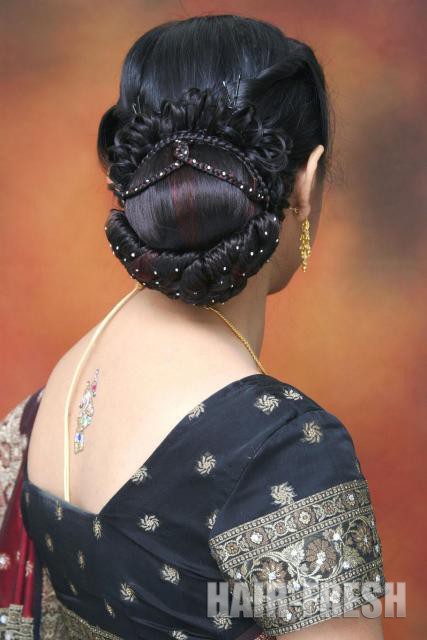
Another subtlety of the Indian haircut that needs to be taken into account is its exceptional colorfulness.




